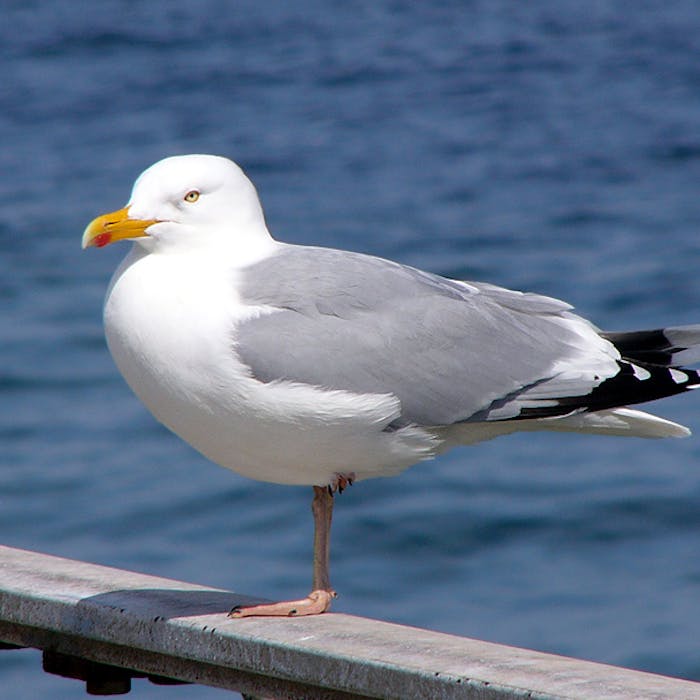
Herring Gull - ruling the roost at the seaside
Swooping in and stealing your chips or ice-cream with a screech, the herring gull is the typical scavenger seagull of Britain's seaside resorts. A large gull, it is similar in appearance to the Common Gull, but has a distinctive red spot on its bill.
Once dependent on catching its food from marine life and insects, the herring gull has learned to live alongside the human inhabitants of our seaside towns, particularly during the breeding season. In winter it can be found on farmland and wetland, inland landfill sites, playing fields, and reservoirs as well as coastal habitats throughout the UK. Males and females are both large, and look alike. In flight they are impressive performers. The red spot on its bill is a trigger to its chicks to beg for food by tapping it. Juveniles are mottled brown with a dark bar at the tip of the tail and a black bill. Immature birds become progressively greyer above and white below until they reach adult plumage in their 3rd winter.
British birds are resident and mostly sedentary, so that after nesting the adults and juveniles disperse only short distances to favoured feeding grounds, often farmland away from the coasts. Some do migrate to southern Europe and the Mediterranean for the winter, where they are joined by other Continental birds that have migrated southwards. Similarly, the British population may increase three- or fourfold when Icelandic and Scandinavian birds stay for the winter.
Herring gulls usually mate for life and take it in turns to incubate the eggs, feeding and protecting their chicks. Nests are on cliffs or rooftops. Chimneys are not blocked by nesting birds, as the gulls nest amongst the chimney pots, not on them. The same nesting site will be used for years by the same pair of birds. The first records of them adopting a house roof on which to nest occurred in south west England only in the 1920s.
Young seagulls form nursery flocks, where they not only play, but also learn important skills for adulthood, with the few adult males watching over them. These flocks of young birds stay together until they reach breeding age.
Herring Gulls are intelligent birds. One of their clever behaviours is to apparently tap dance on the grass, mimicking rain, which tricks earthworms into emerging from the soil to be eaten. They show little hesitation in swooping down to steal food from the hands of humans, although a recent study demonstrated that they are less likely to do so if human eye contact is made.
Like most gulls, European herring gulls are long-lived, with a maximum age of 49 years recorded. This once common gull of the seaside is now a red list species of conservation concern owing to its population declining by more half in the last 25 years.
Further reading
Links to external websites are not maintained by Bite Sized Britain. They are provided to give users access to additional information. Bite Sized Britain is not responsible for the content of these external websites.
